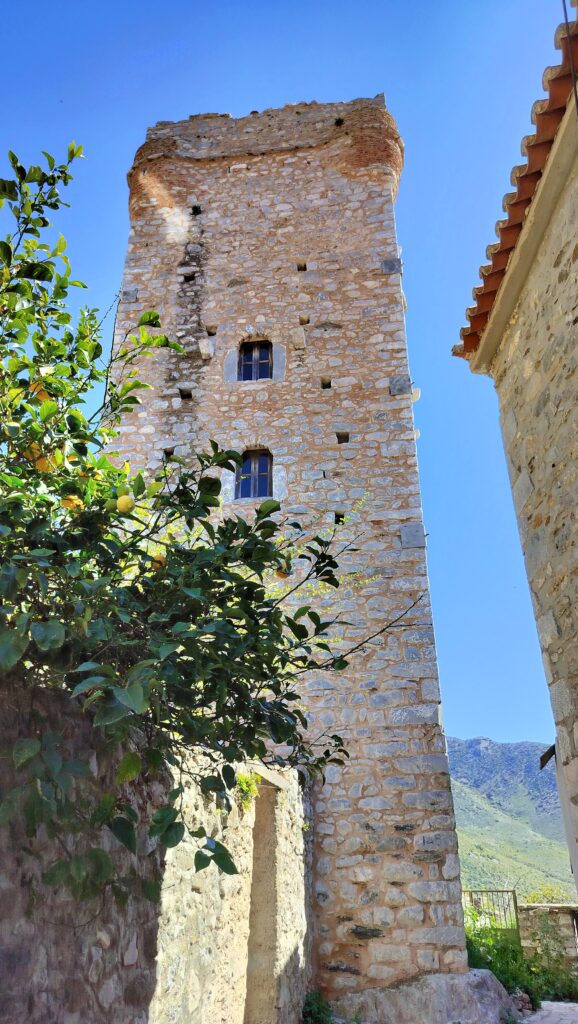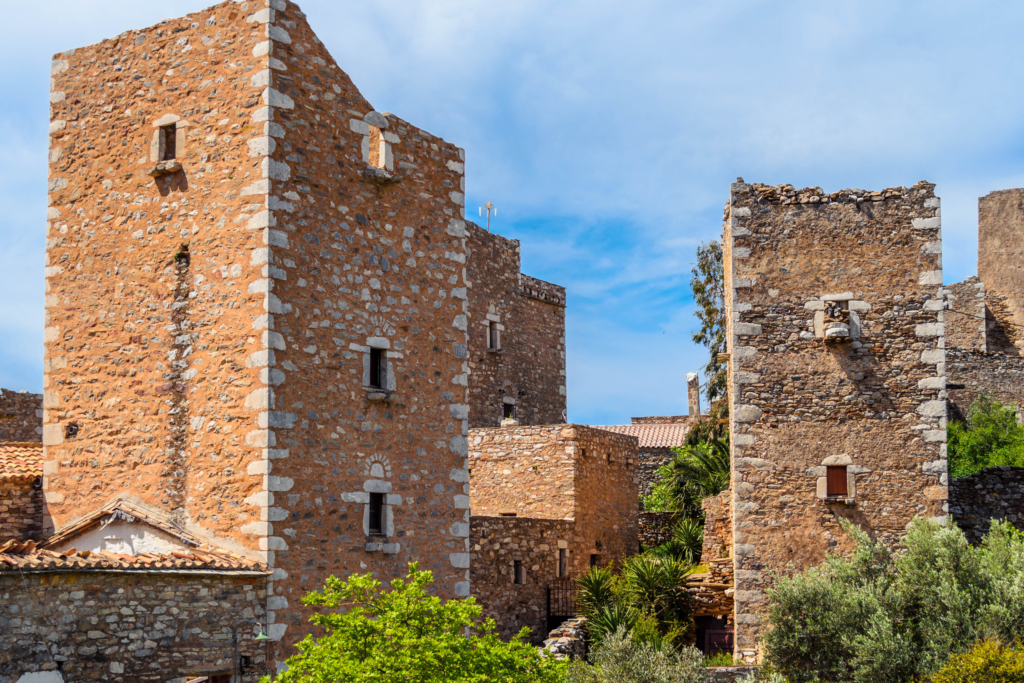The Mani Peninsula, located in the southern part of the Peloponnese in Greece, is renowned for its dramatic landscapes and rich history. Its most striking features are the distinctive Mani Tower houses, which testify to the region’s turbulent past and unique architectural heritage.

The Historical Significance of Mani Tower Houses
These tower houses, or “pyrgospita,” emerged between the 17th and 19th centuries, marked by frequent conflicts. The towers were constructed as fortified residences to protect families from Ottoman forces, pirates, and rival clans. The towers’ height and robust construction symbolised defence capabilities and the social status of the families that built them. The taller the tower, the more influential the family.
Architectural Characteristics
Mani Tower Houses are characterised by tall, narrow structures made from local stone, featuring minimal windows and multiple stories. The strategic design offered defence advantages such as limited access points and elevated entrances. Inspired by Byzantine military architecture, these towers blend functionality and aesthetic simplicity, crafted by skilled local masons who passed down their techniques through generations.

Noteworthy Mani Tower Houses and Villages
Vathia: One of the most picturesque villages in Mani, Vathia is renowned for its cluster of stone towers perched on a hillside. This village provides a stunning example of the region’s defensive architecture. Many of the towers in Vathia have been restored and converted into guesthouses, allowing visitors to experience their historical charm first-hand.
Lagia: Another village worth exploring is Lagia, where visitors can wander through narrow streets lined with well-preserved towers. Each tower in Lagia tells a story of the past, reflecting the village’s long-standing traditions and historical significance.


Cultural Impact and Modern Tourism
Today, the Mani Tower Houses are not just relics of the past but vibrant parts of the local culture. They attract tourists from around the world who are eager to learn about Mani’s history and enjoy its natural beauty. These towers often serve as unique accommodations, providing guests with a direct connection to the region’s heritage.
Visitors can also explore other historical sites in the area, such as Byzantine chapels and the Cape Tainaron lighthouse, which marks the southernmost point of mainland Greece. These sites offer additional insights into the rich tapestry of Mani’s history and culture.

Conclusion
The Mani Tower Houses are remarkable examples of the region’s architectural ingenuity and resilience. They provide a window into the past, illustrating how the people of Mani lived and defended themselves in a rugged and often hostile environment. The Mani Peninsula and its tower houses are unmissable destinations for travellers seeking to delve into Greece’s rich history and enjoy its scenic beauty.
By visiting and supporting these historical structures, we can help preserve them for future generations and ensure that the legacy of Mani’s past continues to inspire and educate.
Search
Categories
- Accommodation
- Activities
- Architecture
- Areopoli
- Awards
- Beaches
- Community
- Culture
- Destination Highlights
- Discover
- Entertainment
- Food
- Gerolimenas
- Greek Cuisine
- Guide
- Gythio
- History
- Hotels
- Kardamili
- Kardamyli
- Kotronas
- Living in Mani Greece
- Local Business
- Mani
- Marine Life
- Marmari
- Nature
- News
- Off-the-Beaten-Path
- Stoupa
- Sustainability
- Tradition
- Travelling
- Villas
- Wildlife
